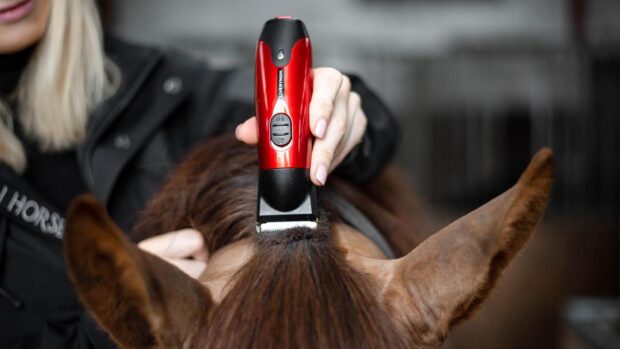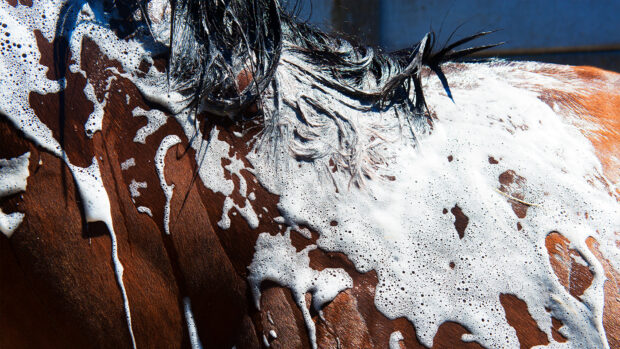Sheath cleaning is a delicate subject: it’s a job that nearly all owners — and some geldings — go to great lengths to avoid. Many professionals maintain that it’s a needless and possibly detrimental exercise.
“There is a school of thought that states you should never clean a sheath. As a rule, I’d say leave it alone,” says vet Karen Coumbe. “That area ‘self-cleans’ and unnecessary washing removes friendly bacteria that helps with this process.
“However, the sheath shouldn’t be ignored: swelling and large accumulations of discharge can signify something serious such as cancer, and should be checked.”
If a horse’s underside is particularly mucky, heavy-duty cleaning with an astringent substance isn’t the answer. Some vets suggest wiping a gentle lubricant, such as KY Jelly, up and around the sheath.
“It lifts off the dirt without washing away the good bacteria,” explains Karen.
Sally Peacock, the York and Ainsty North’s hunt groom, is familiar with mud-caked hunters.
“If a sheath has become very muddy, I’ll go round it with a soft, clean sponge but it’s important to be considerate around the whole belly area,” she says. “Make sure you have warm hands and never use cold water or the hose.
“Warm water relaxes horses and causes most to expose their penis,” she says. “Don’t dally around. Wear gloves and be prepared to hold it to stop it retracting. If it disappears, don’t worry; put your sponge up around the entrance where most dirt is.”
Common sense is required with difficult geldings, says livery yard owner Claire Knight.
“If you clean the sheath, do it after exercise when the horse is tired. Straight from the box or just before feeding, when horses have little patience, are the worst times,” she says. “Try holding a front leg so they can’t kick, twitching or a vet-administered tranquiliser.”
Karen Coumbe warns that sedation won’t necessarily work
“Even tranquilised horses kick — I’ve got the bruises to prove it,” she says.
|
||
 |
||


 Get up to 19 issues FREE
Get up to 19 issues FREE TO SUBSCRIBE
TO SUBSCRIBE 


